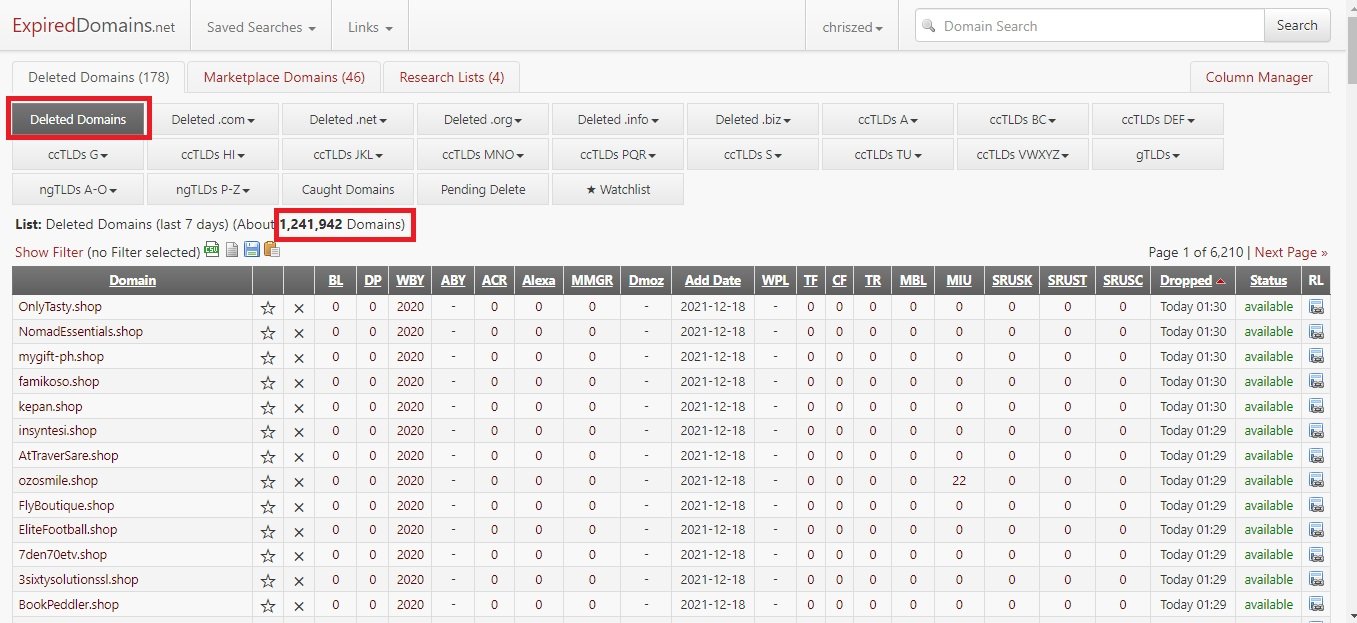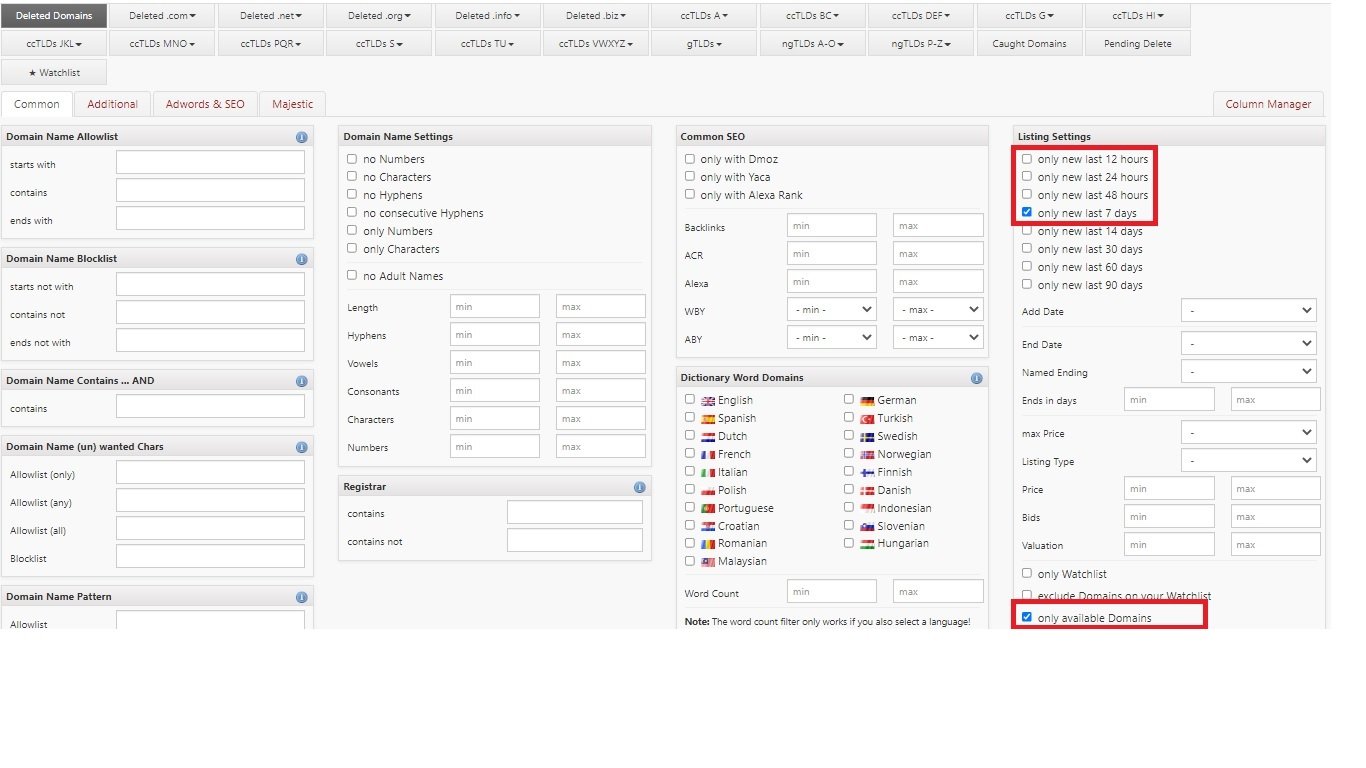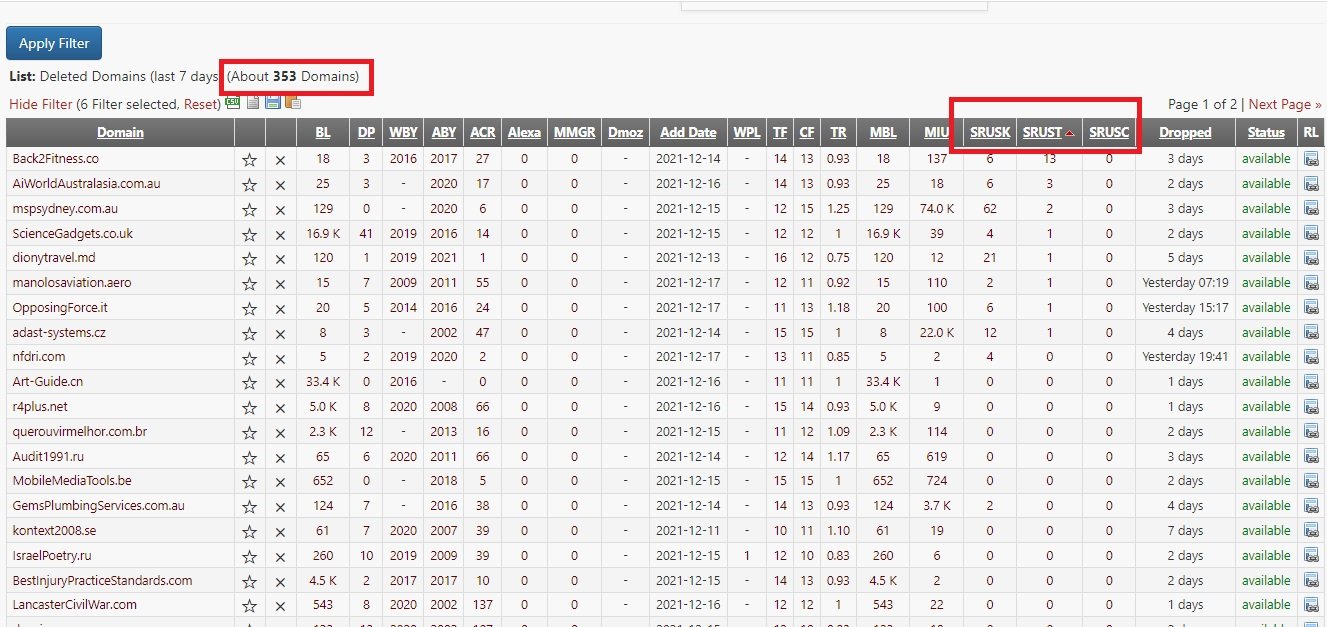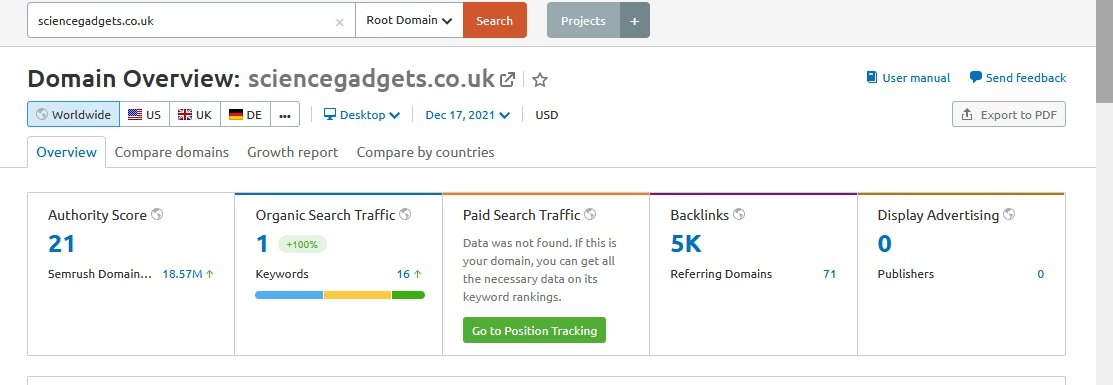- Joined
- May 17, 2018
- Messages
- 263
Greetings, members of MMO!
As a token of appreciation for all the valuable knowledge I've gained from this community, I feel it's time to give back. It's Christmas, and it's Friday night where I am. I admit I've been naughty and received a MMO infraction for a silly mistake. Plus, with Covid wreaking havoc worldwide, not everyone is as fortunate as me to live in the UK where the government provides financial assistance without work.
So, let's get to the crux of the matter. Essentially, this method involves discovering domain names that were previously registered by someone but not renewed. However, the value of a domain name is determined by its ability to attract traffic, which can be due to its brevity, memorability, or the number of backlinks it has, resulting in a high 'authority' score and organic/SEO traffic. It's important to note that no one truly owns a domain name; they merely lease it for a period ranging from one to ten years.
According to GoDaddy, 'CarInsurance.com' holds the title for the most expensive domain ever sold at a whopping $49.7 million. It's safe to assume that this high value is due to the fact that it was accompanied by a fully functioning website selling car insurance. However, the person who initially registered the domain back in the 1990s probably paid the standard registration fee of around $10.
While it's unlikely that the current owners of 'CarInsurance.com' would forget to renew it, if they do, my advice is to register it immediately, even if it means using your last $10 and going hungry for a week. Owning a domain with such high potential value is an incredible asset!
Now, the method I'm about to outline may not result in you obtaining a multi-million-dollar domain for a $10 registration fee. However, I've personally had success using this technique to acquire a casino domain for the registration fee of $20. After creating a mini-site and earning $500 from casino affiliate programs, the original owner contacted me, and I eventually sold the domain back to them for $1500.
Here's the method:
Step 1:
Go to www.expireddomains.net and create a free account. This website is specifically designed for expired or dropped domains. While it does include auction and Buy It Now domains, this guide focuses solely on Deleted Domains.
After registering and logging in, navigate to the 'Deleted Domains' section on the main page. You should see a list, similar to the image below, displaying all the Deleted Domains (over 1.2 million).

As previously mentioned, owning a domain name is essentially renting it for a period between 1 to 10 years, with most registrations lasting 1 or 2 years. The domains listed on this site were registered by people or companies at some point but were not renewed, rendering them available for registration.
However, domains follow a specific lifecycle. For instance, a domain registered on January 1st, 2020, will not be immediately available for registration on January 1st, 2021, if the current owner fails to renew it. There is typically a grace period of about a month, during which the previous owner can renew the domain and prevent others from registering it. This is beneficial for the current owner as they may have simply forgotten to renew it, and for the registrar, who can obtain another year of sales.
While 99% of registered domains have little to no value and maintain the same worth as they had upon registration, some do increase in value and are auctioned off either by the original registrant or by domain registrars such as Namecheap, GoDaddy, and 123Reg. Depending on the domain's value, it may sell for a few dollars above the registration fee or for thousands of dollars. However, domains that go unsold and those that are not renewed or re-registered end up in the Deleted Domains section. This is where we'll attempt to locate valuable domains.
Step 2:
Filters are essential. It's highly likely that 99% or even 99.9% of the domains listed here are worthless, spam-ridden, deindexed, and simply not worth considering. There is a valid reason why these domains were not renewed and dropped in the first place. By applying filters, we can eliminate the low-quality domains and focus on the few that could potentially be valuable.

Personally, I prefer to choose listings that are labeled as new and marked as "Common" within the past 12/24/48 hours or 7 days. If a listing is any older, it's likely that someone else has already discovered and registered it. Additionally, it's crucial to check the "Only Available Domains" option to avoid viewing domains that have already been registered by someone else.

Next, adjusting the "Majestic" settings is critical (I'd argue it's one of the most important steps). You can set the minimum "Citation Flow" to any value you choose, but I would suggest a range between 5-20 (you can customize this further, but decreasing the value may result in poor quality domains while increasing it could limit the available options). Set the "Trust Flow" to the same value. For instance, in this case, I recommend selecting 10 for both.
The reason behind this is that spammers can generate thousands or even millions of backlinks to a domain to boost its "Citation Flow." By choosing a similar "Trust Flow" number, you can filter out spammy domains.
Additionally, set the "Trust Ratio" between 0.75 and 1.25, with a preference for a value closer to 1. It's essential to do this since software like GSA can be used to generate thousands of backlinks to a domain, making it appear more authoritative than it genuinely is. Targeting a "Trust Ratio" of 1 will aid in weeding out these spammy domains.
Finally, click on the "Apply Filter" button, and you'll receive a smaller but better list of domains to choose from.

After following the previous steps, you should have a list of 353 domains, which is a considerable reduction from over 1.2 million domains. You can now sort the list by clicking on the column headers. For instance, you can sort by SRUSK (SEMRUSH ranking keywords), SRUST (SEMRUSH estimated traffic), or SRUSC (SEMRUSH ranking keyword cost).

Upon finding a domain that you believe may have value, the first step is to click on the 'RL' tab to access a list of links. The initial checks should focus on ensuring that the domain is indexed. To do this, click on the 'Google site' link, which is equivalent to using the site: function. For instance, using site:mmolearn.com will display every page indexed by Google. If there are no results, it is probable that the site has been deindexed or blacklisted by Google. Although it is possible to get it re-indexed, the effort required may not be worthwhile, and you should move on to the next domain.
The second check is to verify whether the domain is genuinely available. I've found that Namecheap is quite reliable and covers most TLDs, followed by Godaddy, DynaDot, or 123reg. However, some TLDs, such as .au, .cn, .jp, and .kz, may only be registered if you are a resident of that country or own a registered business with a similar name. For example, I've found many excellent .au (Australian domains), but they're nearly impossible to register. Conversely, domains such as .com, .co.uk, .net, and so on, are readily available to anyone with $10 to spend.
Once you've found a domain that is:
However, if your business involves promoting products like dick pills, Michael Kors bags, or casinos and the domain is receiving organic traffic, then it may still be worth registering the domain and redirecting the traffic to your website using a wildcard redirect, which redirects all subdomains (e.g., spammydomain.com/hugedick) to your BlueChew offer.
To further assess the domain's history, you can use the "WayBackMachine" tool, which takes snapshots of websites at various points in time. By revisiting the RL link, you can access this tool and look at the most recent snapshots, which can be from weeks, months, or even years ago. This will allow you to determine if the domain has always been used for the same website (a good sign) or if it has recently been promoting unrelated or spammy content (a bad sign). Green snapshots may indicate redirects, which could suggest that the domain was used to artificially boost another domain's traffic or engage in other spammy practices. However, it's worth noting that while a domain is in the "pending delete" status, it may be redirected to a domain registrar or auction site like Namecheap or Sedo, which isn't necessarily a red flag.
In summary, using the WayBackMachine can help you evaluate the domain's history and identify any potential red flags before making a decision about whether to proceed with registration.
If you don't have a budget, signing up for a free SEMRUSH account is a great option as you can get 10 free searches every 24 hours to see which keywords the domain is ranking for. Alternatively, if you have a paid Ahrefs account, you can also view the domain's ranking keywords. I am aware that there are group buy options available for these services, but I won't mention them by name as I don't want to risk receiving a warning from MMO.
During the creation of this guide, I came across a great domain using the technique I described. I will share the domain, but I won't register it myself. It's a co.uk domain that would be perfect for an affiliate site as it includes the words "science" and "gadgets" and ranks for relevant keywords. I suggest that whoever is lucky enough to snap up this domain should add a variety of science-related Christmas gifts for kids, teens, and adults through Amazon affiliate links. It's important to note that the Amazon affiliate cookie will remain on a user's computer, so even if they don't purchase anything immediately, but later decide to do all their Christmas shopping and spend $2,000, you'll still receive a percentage of those purchases.


The final two images show the SEMRUSH results for the domain I discovered using the technique outlined in this guide. The images display the domain's "Authority" score (16/100) and the keywords it's ranking for. While the traffic score is only 1, it's important to note that this is a dropped domain that's still ranking for 16 keywords. Moreover, the domain name, www.sciencegadgets.co.uk, is buyer-oriented, suggesting that people visiting this site aren't looking for information but rather are interested in making a purchase. Whoever registers this domain will only need to create some articles such as "The Five Best Microscopes for Kids" and include affiliate links to the products on Amazon. They can then share the articles in Facebook groups filled with parents searching for Christmas gift ideas and watch the profits pour in.
Happy Holidays!
As a token of appreciation for all the valuable knowledge I've gained from this community, I feel it's time to give back. It's Christmas, and it's Friday night where I am. I admit I've been naughty and received a MMO infraction for a silly mistake. Plus, with Covid wreaking havoc worldwide, not everyone is as fortunate as me to live in the UK where the government provides financial assistance without work.
So, let's get to the crux of the matter. Essentially, this method involves discovering domain names that were previously registered by someone but not renewed. However, the value of a domain name is determined by its ability to attract traffic, which can be due to its brevity, memorability, or the number of backlinks it has, resulting in a high 'authority' score and organic/SEO traffic. It's important to note that no one truly owns a domain name; they merely lease it for a period ranging from one to ten years.
According to GoDaddy, 'CarInsurance.com' holds the title for the most expensive domain ever sold at a whopping $49.7 million. It's safe to assume that this high value is due to the fact that it was accompanied by a fully functioning website selling car insurance. However, the person who initially registered the domain back in the 1990s probably paid the standard registration fee of around $10.
While it's unlikely that the current owners of 'CarInsurance.com' would forget to renew it, if they do, my advice is to register it immediately, even if it means using your last $10 and going hungry for a week. Owning a domain with such high potential value is an incredible asset!
Now, the method I'm about to outline may not result in you obtaining a multi-million-dollar domain for a $10 registration fee. However, I've personally had success using this technique to acquire a casino domain for the registration fee of $20. After creating a mini-site and earning $500 from casino affiliate programs, the original owner contacted me, and I eventually sold the domain back to them for $1500.
Here's the method:
Step 1:
Go to www.expireddomains.net and create a free account. This website is specifically designed for expired or dropped domains. While it does include auction and Buy It Now domains, this guide focuses solely on Deleted Domains.
After registering and logging in, navigate to the 'Deleted Domains' section on the main page. You should see a list, similar to the image below, displaying all the Deleted Domains (over 1.2 million).

As previously mentioned, owning a domain name is essentially renting it for a period between 1 to 10 years, with most registrations lasting 1 or 2 years. The domains listed on this site were registered by people or companies at some point but were not renewed, rendering them available for registration.
However, domains follow a specific lifecycle. For instance, a domain registered on January 1st, 2020, will not be immediately available for registration on January 1st, 2021, if the current owner fails to renew it. There is typically a grace period of about a month, during which the previous owner can renew the domain and prevent others from registering it. This is beneficial for the current owner as they may have simply forgotten to renew it, and for the registrar, who can obtain another year of sales.
While 99% of registered domains have little to no value and maintain the same worth as they had upon registration, some do increase in value and are auctioned off either by the original registrant or by domain registrars such as Namecheap, GoDaddy, and 123Reg. Depending on the domain's value, it may sell for a few dollars above the registration fee or for thousands of dollars. However, domains that go unsold and those that are not renewed or re-registered end up in the Deleted Domains section. This is where we'll attempt to locate valuable domains.
Step 2:
Filters are essential. It's highly likely that 99% or even 99.9% of the domains listed here are worthless, spam-ridden, deindexed, and simply not worth considering. There is a valid reason why these domains were not renewed and dropped in the first place. By applying filters, we can eliminate the low-quality domains and focus on the few that could potentially be valuable.

Personally, I prefer to choose listings that are labeled as new and marked as "Common" within the past 12/24/48 hours or 7 days. If a listing is any older, it's likely that someone else has already discovered and registered it. Additionally, it's crucial to check the "Only Available Domains" option to avoid viewing domains that have already been registered by someone else.

Next, adjusting the "Majestic" settings is critical (I'd argue it's one of the most important steps). You can set the minimum "Citation Flow" to any value you choose, but I would suggest a range between 5-20 (you can customize this further, but decreasing the value may result in poor quality domains while increasing it could limit the available options). Set the "Trust Flow" to the same value. For instance, in this case, I recommend selecting 10 for both.
The reason behind this is that spammers can generate thousands or even millions of backlinks to a domain to boost its "Citation Flow." By choosing a similar "Trust Flow" number, you can filter out spammy domains.
Additionally, set the "Trust Ratio" between 0.75 and 1.25, with a preference for a value closer to 1. It's essential to do this since software like GSA can be used to generate thousands of backlinks to a domain, making it appear more authoritative than it genuinely is. Targeting a "Trust Ratio" of 1 will aid in weeding out these spammy domains.
Finally, click on the "Apply Filter" button, and you'll receive a smaller but better list of domains to choose from.

After following the previous steps, you should have a list of 353 domains, which is a considerable reduction from over 1.2 million domains. You can now sort the list by clicking on the column headers. For instance, you can sort by SRUSK (SEMRUSH ranking keywords), SRUST (SEMRUSH estimated traffic), or SRUSC (SEMRUSH ranking keyword cost).

Upon finding a domain that you believe may have value, the first step is to click on the 'RL' tab to access a list of links. The initial checks should focus on ensuring that the domain is indexed. To do this, click on the 'Google site' link, which is equivalent to using the site: function. For instance, using site:mmolearn.com will display every page indexed by Google. If there are no results, it is probable that the site has been deindexed or blacklisted by Google. Although it is possible to get it re-indexed, the effort required may not be worthwhile, and you should move on to the next domain.
The second check is to verify whether the domain is genuinely available. I've found that Namecheap is quite reliable and covers most TLDs, followed by Godaddy, DynaDot, or 123reg. However, some TLDs, such as .au, .cn, .jp, and .kz, may only be registered if you are a resident of that country or own a registered business with a similar name. For example, I've found many excellent .au (Australian domains), but they're nearly impossible to register. Conversely, domains such as .com, .co.uk, .net, and so on, are readily available to anyone with $10 to spend.
Once you've found a domain that is:
- Listed on Google's index
- Open for registration
However, if your business involves promoting products like dick pills, Michael Kors bags, or casinos and the domain is receiving organic traffic, then it may still be worth registering the domain and redirecting the traffic to your website using a wildcard redirect, which redirects all subdomains (e.g., spammydomain.com/hugedick) to your BlueChew offer.
To further assess the domain's history, you can use the "WayBackMachine" tool, which takes snapshots of websites at various points in time. By revisiting the RL link, you can access this tool and look at the most recent snapshots, which can be from weeks, months, or even years ago. This will allow you to determine if the domain has always been used for the same website (a good sign) or if it has recently been promoting unrelated or spammy content (a bad sign). Green snapshots may indicate redirects, which could suggest that the domain was used to artificially boost another domain's traffic or engage in other spammy practices. However, it's worth noting that while a domain is in the "pending delete" status, it may be redirected to a domain registrar or auction site like Namecheap or Sedo, which isn't necessarily a red flag.
In summary, using the WayBackMachine can help you evaluate the domain's history and identify any potential red flags before making a decision about whether to proceed with registration.
Listed on Google's search engine index- Available for registration
- Not a victim of spamming
- Has potential value - can be resold, transformed into a money or niche site, used for PBN (private blog network), or employed for a 301 redirect. However, some domains may have high "authority" and rank for multiple keywords but lack actual potential. For example, I obtained a domain for a Los Angeles restaurant that went out of business in 2020. It had backlinks from prominent sources such as The New York Times, Fortune, NYmag, Timeout, and Telegraph.co.uk, but I found it difficult to rank for any topics unrelated to the restaurant.
If you don't have a budget, signing up for a free SEMRUSH account is a great option as you can get 10 free searches every 24 hours to see which keywords the domain is ranking for. Alternatively, if you have a paid Ahrefs account, you can also view the domain's ranking keywords. I am aware that there are group buy options available for these services, but I won't mention them by name as I don't want to risk receiving a warning from MMO.
During the creation of this guide, I came across a great domain using the technique I described. I will share the domain, but I won't register it myself. It's a co.uk domain that would be perfect for an affiliate site as it includes the words "science" and "gadgets" and ranks for relevant keywords. I suggest that whoever is lucky enough to snap up this domain should add a variety of science-related Christmas gifts for kids, teens, and adults through Amazon affiliate links. It's important to note that the Amazon affiliate cookie will remain on a user's computer, so even if they don't purchase anything immediately, but later decide to do all their Christmas shopping and spend $2,000, you'll still receive a percentage of those purchases.


The final two images show the SEMRUSH results for the domain I discovered using the technique outlined in this guide. The images display the domain's "Authority" score (16/100) and the keywords it's ranking for. While the traffic score is only 1, it's important to note that this is a dropped domain that's still ranking for 16 keywords. Moreover, the domain name, www.sciencegadgets.co.uk, is buyer-oriented, suggesting that people visiting this site aren't looking for information but rather are interested in making a purchase. Whoever registers this domain will only need to create some articles such as "The Five Best Microscopes for Kids" and include affiliate links to the products on Amazon. They can then share the articles in Facebook groups filled with parents searching for Christmas gift ideas and watch the profits pour in.
Happy Holidays!